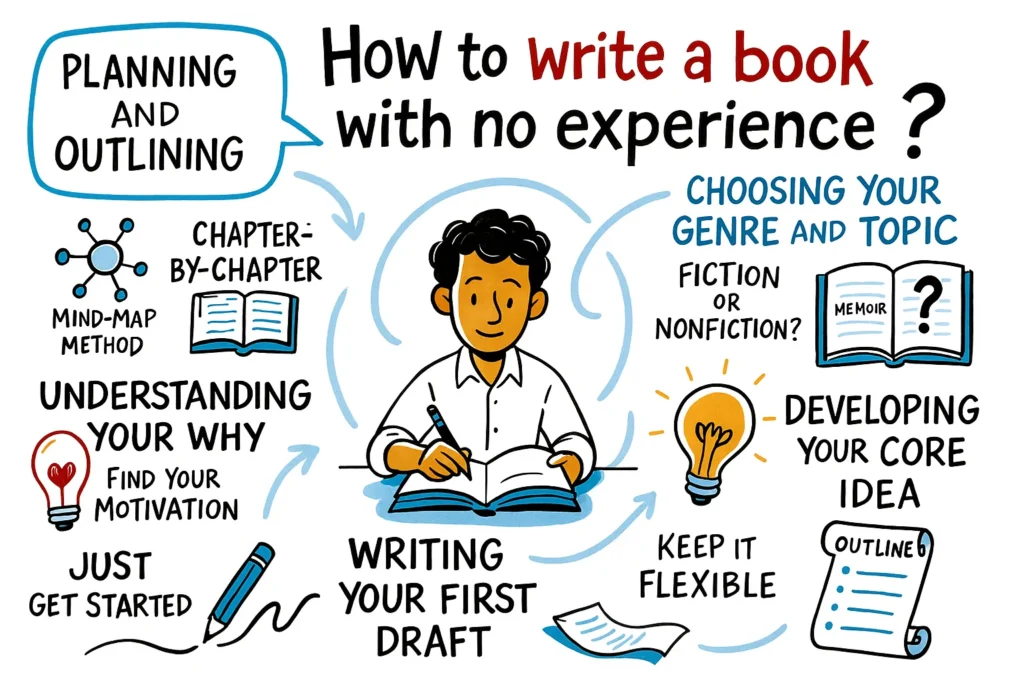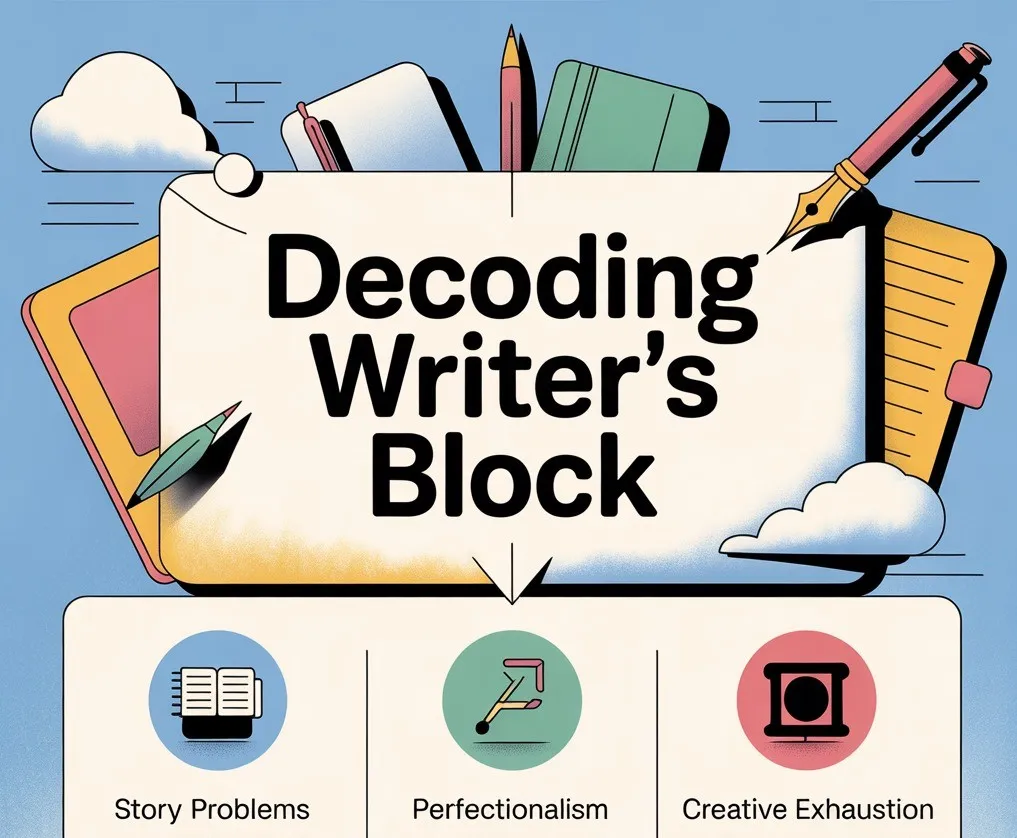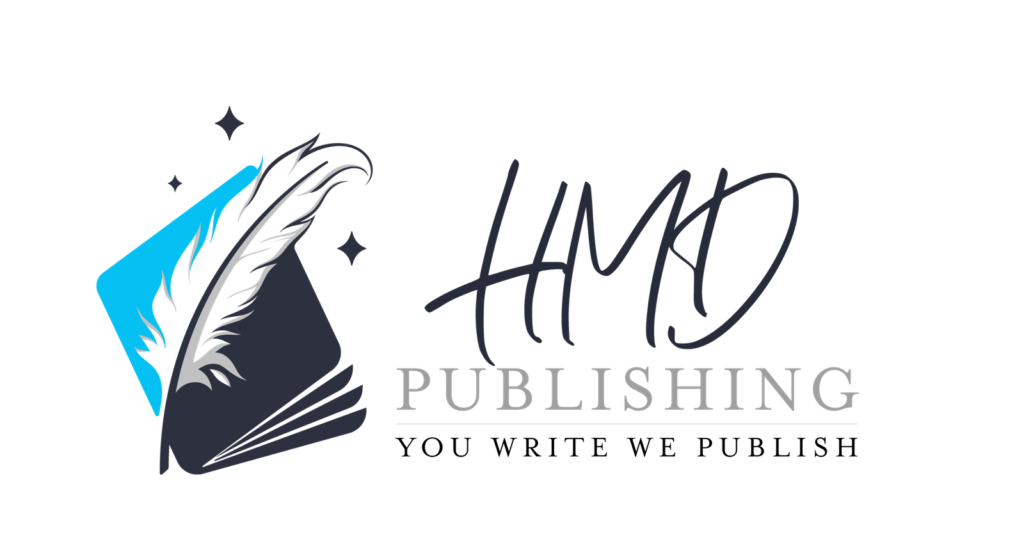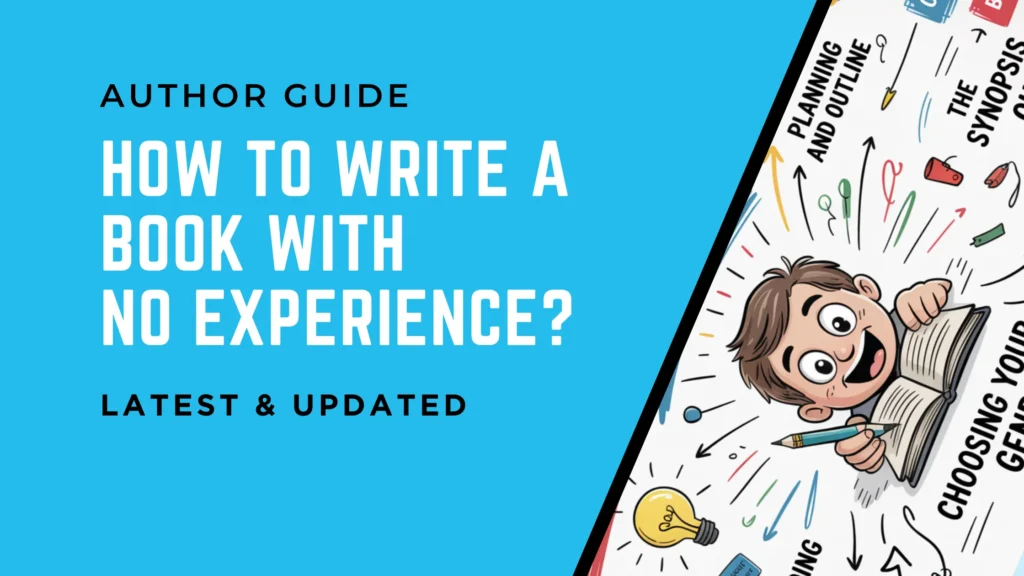I’ll be honest with you, there’s something terrifying about a blinking cursor on a blank page. It’s like the page is silently mocking you: “So, you want to be a writer? Prove it.”
I remember the first time I sat down to write a book. I had no clue what I was doing, no MFA, no publisher waiting on the other end, not even a finished idea. Just this ache in my chest that wouldn’t go away until I got the words out. Sound familiar?
If you’ve ever whispered to yourself, “I want to write a book, but I don’t know where to start,” you’re not alone. You’re standing at the exact starting line where every author once stood, uncertain, overwhelmed, and completely human.
This isn’t some boring, bullet-point list of generic advice. This is your survival guide. Whether your dream is to write fiction, nonfiction, or just get that story out of your head before it eats you alive, I’ve got you.
Top-Rated Book Writing Service
Let’s cut through the noise and show you exactly how to write your first book, even if you have zero experience. Ready?
Good. Let’s begin.

Can Anyone Write a Book? (Yes)
The answer is an emphatic yes. Every successful author began as a complete novice with no experience. The key insight to remember is that writing is a learnable skill and not an innate talent reserved for a chosen few. As Arizona State University Professor James Blasingame puts it:
“Everyone has a story to tell, and the language to tell it. Anybody can do it. As human beings, we are creatures of story”.
The fear you may be experiencing is natural and shared by even published authors. As Thomas Mann, winner of the 1929 Nobel Prize in Literature, observed:
“A writer is someone for whom writing is more difficult than it is for other people”.
This difficulty isn’t a barrier; rather, it’s simply part of the process that every writer has to navigate.
Best Book Writing Tools & Software for Authors
Step-by-Step Breakdown for Beginners
Planning and Outlining
Effective planning forms the foundation of any successful book. Without a clear roadmap, you risk getting lost in your own story or losing motivation when the initial excitement wears off. Here are the steps described below:
Understanding Your Why
Before you start writing a single word, ensure to determine why you want to write this book. Your “why” will serve as your compass during difficult writing sessions and moments of doubt. Are you writing to share knowledge, tell a personal story, entertain readers, or build authority in your field? This innate motivation will sustain you through the challenging parts of the writing process.
Choosing Your Genre and Topic
Start the writing process by identifying what type of book you want to write. Will it be fiction or non-fiction? A memoir, self-help guide, mystery novel, or fantasy epic? Choose a genre you’re passionate about and where your core interest lies, as you’ll be spending considerable time indulging in this world. Reading extensively in your chosen genre helps you understand audience expectations and market conventions.
Developing Your Core Idea
This is the point to transform your initial spark into a concrete concept. For fiction, this might involve creating your main character and their central conflict. For non-fiction, identify the main problem you’re solving or the key insight you’re sharing. You should be able to summarize your book concept in 3-5 sentences.
Creating Your Outline
Remember that an outline serves as the skeleton of your book, providing structure and direction. There are several approaches to get done with the process of outlining, such as:
- The Synopsis Outline: Create a one or two-page summary of your entire book, hitting the major plot points or chapter themes.
- Chapter-by-Chapter Outline: Break your book into sections or chapters, with 3-4 main points per chapter. This creates a clear roadmap for your writing sessions.
- The Mind Map Method: Start with your central idea in the middle and branch out to related themes, characters, or topics. Then, organize these branches into a logical sequence.
- The Three-Act Structure: For fiction, organize your story into beginning (setup), middle (confrontation), and end (resolution). Each act should contain specific story beats and character developments.
Remember that your outline isn’t set in stone. It’s a living document that can evolve as you write and discover new aspects of your story. Its goal is to have enough structure to keep you moving forward without stifling your creativity.
Writing Your First Draft
The first draft is where your book truly begins to take shape. This phase requires discipline, consistency, and the willingness to write imperfectly.
Getting Unstuck During the Process
Writer’s block and creative stagnation are normal parts of the writing process. Here are proven strategies to overcome these challenges:

Understanding Writer’s Block
Writer’s block typically stems from three main causes:
- You’re genuinely unsure of what happens next
- Fear that your writing isn’t good enough
- Your mental energy is depleted
Identifying the root cause helps you choose the appropriate solution.
Strategies for Getting Unstuck
Here are some strategies you can follow for getting unstuck during the process:
- Freewriting: Set a timer for 10-15 minutes and write continuously without stopping to edit or think. This gets your creative muscles moving and often generates unexpected ideas.
- Change Your Environment: Write in a different location, try a different time of day, or switch from computer to pen and paper.
- Ask Questions: Use the journalist’s approach of who, what, where, when, and why to explore your story or topic. Fill notebooks with questions about your characters, plot, or subject matter.
- Take Strategic Breaks: Sometimes your subconscious needs time to work through problems. Take a walk, shower, or engage in mindless activities that allow your mind to wander.
- Skip the Stuck Part: Write the scenes or chapters that excite you most. Remember that you can always come back to fill the gaps left behind during the writing process.
- Lower Your Standards: Permit yourself to write badly. The goal is progress, not perfection.
- Read in Your Genre: Sometimes, inspiration comes from seeing how other authors handle similar challenges
Is Book Writing Profitable in 2025?
How to Teach Yourself the Craft of Writing?
No doubt, writing is a skill that can be learned and improved through deliberate, consistent practice and study. While formal education can be helpful as many successful authors are self-taught about the writing process.
Read Like a Writer
The foundation of writing education is extensive reading. Stephen King emphasises that writers must read “a lot”, across genres and styles. But reading for writers differs from reading for pleasure, such as:
Analyze Structure: Notice how authors organize their chapters, develop character arcs, and pace their narratives. If you’re familiar with the three-act structure, identify these elements in published works.
Study Craft Elements: Pay attention to dialogue, description, point of view, and voice. How do authors handle exposition? When do they use a summary versus a scene?
Read Both Good and Bad Books: Poor writing teaches you what to avoid just as effectively as great writing teaches you what to avoid.
Take Notes: Keep a reading journal where you record techniques, phrases, or structural choices that impress you.
Essential Resources for Self-Education
- What are the best books on Writing Craft
Start with these foundational texts that consistently appear on “must-read” lists:
“On Writing” by Stephen King: Part memoir, part guidebook, this book focuses more on the “why” of writing than technical how-to advice.
“The Elements of Style” by Strunk and White: Essential for grammar, punctuation, and basic composition principles.
“Bird by Bird” by Anne Lamott: Combines practical advice with inspiration and wisdom about the writing life.
“The War of Art” by Steven Pressfield: Addresses the psychological challenges of creative work and overcoming resistance.
- Online Resources
Writer’s Digest: Offers articles, prompts, and courses covering all aspects of writing and publishing.
DIY MFA: Provides structured writing workshops and free resources for self-directed learning.
Grammar Girl: Searchable blog and podcast for grammar and style questions.
Now Novel: Comprehensive guides and blog articles on novel writing fundamentals.
Common Mistakes New Writers Make
Understanding common pitfalls helps you avoid them and write more effectively from the start. These mistakes are so prevalent that recognizing them immediately marks you as a more experienced writer.
Technical and Craft Mistakes
Editing Too Early
Many new writers edit as they write or revise extensively before completing their first draft. This approach has several problems: you may be polishing scenes that won’t make the final cut, it slows your momentum, and it prevents you from discovering your story through the writing process.
Solution: Complete your entire first draft before beginning major revisions. Use placeholders for problem areas and keep moving forward.
Point of View Problems
New writers often struggle with “head-hopping”—switching between different characters’ perspectives within scenes. This confuses readers and weakens the narrative focus.
Solution: Choose one point of view per scene and stick to it. If using third-person limited, stay in one character’s head throughout the scene.
Telling Instead of Showing
Beginning writers frequently rely on summary and exposition rather than dramatizing events. This creates distance between the readers and the story.
Examples:
Telling: “John was angry.”
Showing: “John slammed his fist on the desk, sending papers flying.”
Solution: Use action, dialogue, and sensory details to convey information rather than simply stating facts.
Dialogue Issues
Common dialogue problems include:
Incorrect punctuation and formatting
Characters who all sound the same
Dialogue that exists only to convey information
Overly formal or stilted conversation
Solution: Read dialogue aloud, study how real people speak, and ensure each character has a distinct voice.
By understanding these common pitfalls and actively working to avoid them, you, as a write,r will produce cleaner first drafts and develop better writing habits from the beginning. Remember that every published author has made these mistakes. The key is learning from them and improving with each project.
How to write a book from start to finish as a beginner?
How to Avoid These Mistakes
Study the Craft: Read books on writing technique and analyze published works in your genre.
Join Writing Communities: Get feedback from other writers who can spot problems you miss.
Read Extensively: Understanding what works helps you avoid what doesn’t.
Be Patient with Yourself: Remember that making mistakes is part of learning. Don’t forget that every common error that occurs is an opportunity to improve.
Focus on Completion: Your first book doesn’t need to be perfect—it needs to be finished.
To Sum Up
Writing your first book is one of the most challenging and rewarding creative endeavours you can undertake. While the process may seem daunting, remember that every successful author started exactly where you are now, with nothing but an idea and the determination to see it through.
The key to success lies not in having perfect writing skills from the start, but in developing a systematic approach: plan your book thoughtfully, establish consistent writing habits, push through inevitable obstacles, continuously educate yourself about the craft, and learn from common mistakes. The most important part is to permit yourself to write imperfectly without the fear of judgment. Your first draft’s job is to exist, not to be flawless.
Whether your book becomes a bestseller or remains a personal achievement, completing it will transform you from someone who wants to write into someone who has written. That transformation alone makes the journey worthwhile. Start today, write consistently, and trust the process. Your story is waiting to be told to others.




